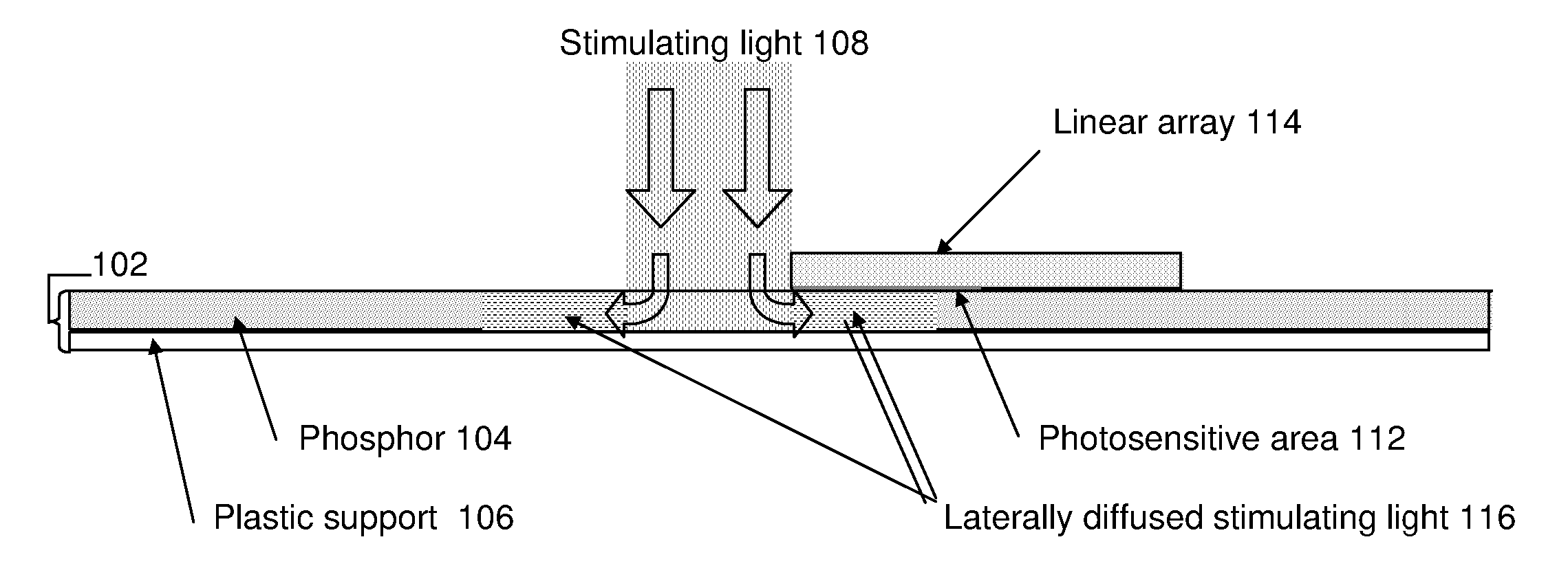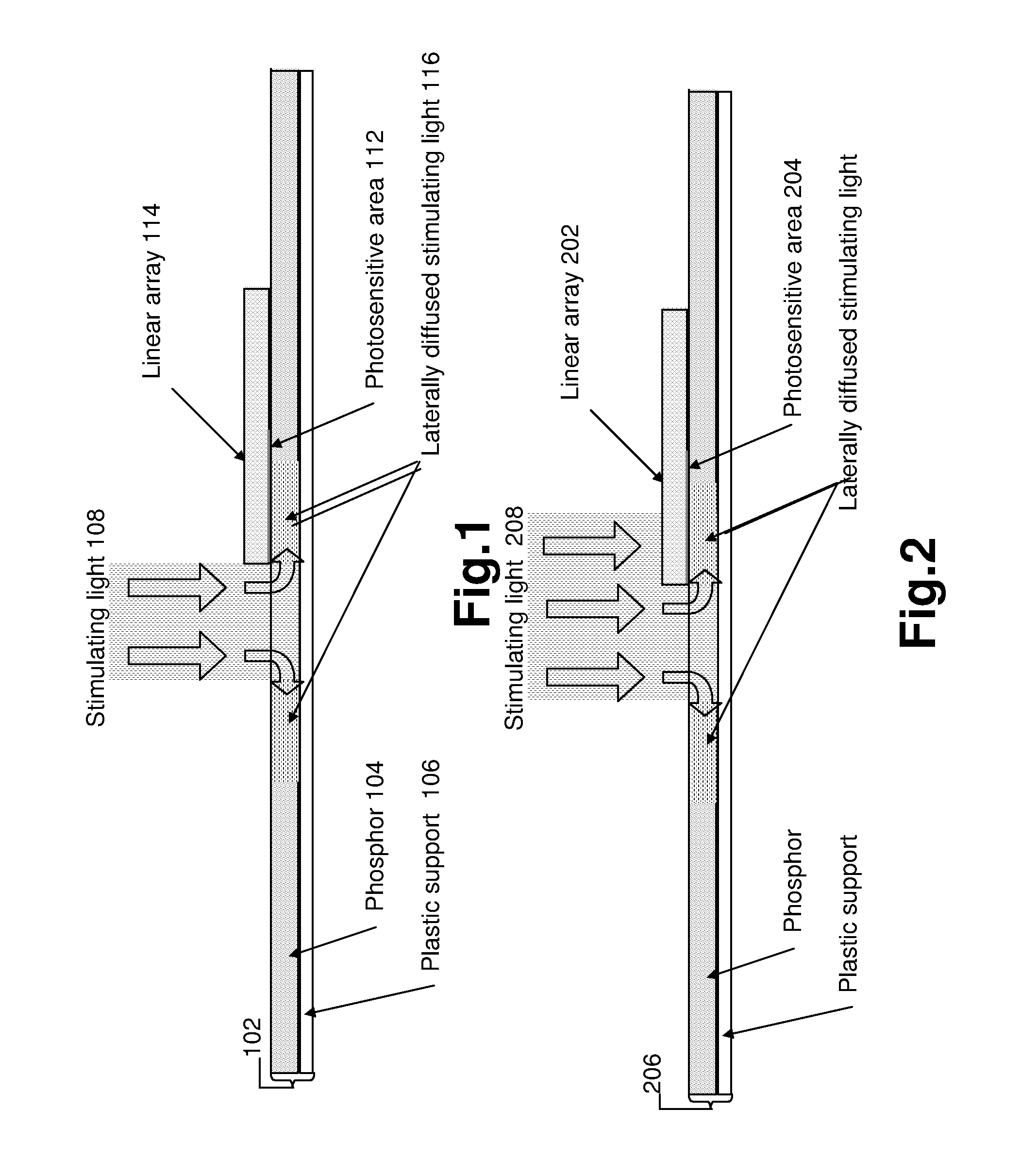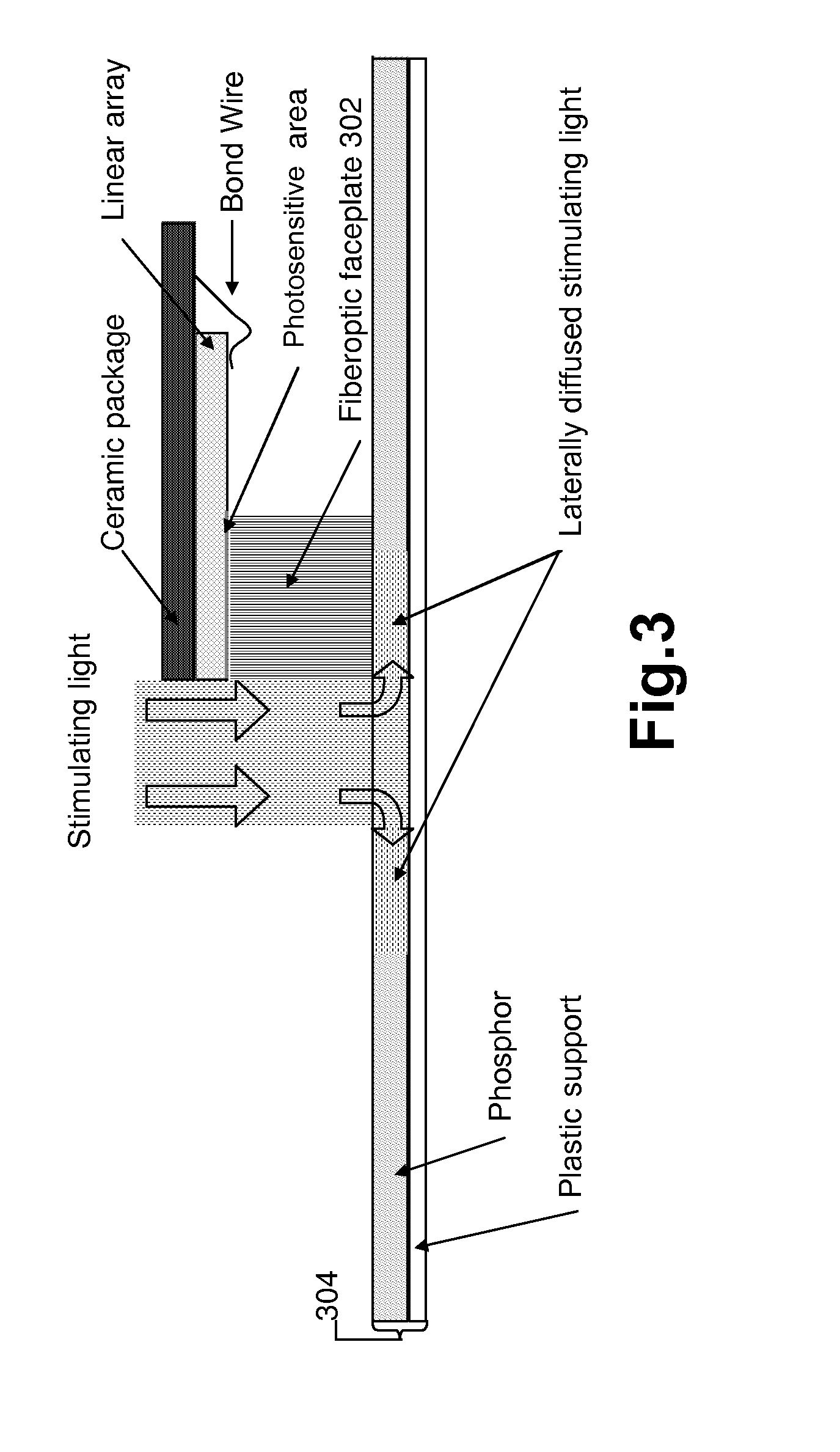Light stimulating and collecting methods and apparatus for storage-phosphor image plates
a technology of light stimulating and collecting methods, applied in the field of digital radiography, can solve the problems of unacceptably long readout time of a typical storage-phosphor plate, large and complex laser scanning mechanism necessary to stimulate one pixel at a time on a 14′′17′′ phosphor plate, and achieve the efficiency with which light released from the storage medium is collected
- Summary
- Abstract
- Description
- Claims
- Application Information
AI Technical Summary
Benefits of technology
Problems solved by technology
Method used
Image
Examples
Embodiment Construction
[0043] As discussed briefly above, specific embodiments of the present invention provide methods and apparatus for simply and efficiently reading an x-ray image stored in a storage-phosphor plate using a photodetector line array. More specific embodiments of the present invention provide methods and apparatus for reading a storage-phosphor plate in an enclosure of identical dimensions to those of a conventional radiography film / screen cassette. Other embodiments and related applications of the techniques of the present invention are described below.
[0044] According to specific embodiments, the present invention provides methods of light stimulating and collecting in storage-phosphor plate readers. Unlike other reading methods where the lateral diffusion of the stimulating light in the plate is a problem, specific embodiments of the present invention rely on such lateral diffusion to stimulate a linear area of the plate which is in direct contact with a photodetector linear array. T...
PUM
 Login to View More
Login to View More Abstract
Description
Claims
Application Information
 Login to View More
Login to View More - R&D
- Intellectual Property
- Life Sciences
- Materials
- Tech Scout
- Unparalleled Data Quality
- Higher Quality Content
- 60% Fewer Hallucinations
Browse by: Latest US Patents, China's latest patents, Technical Efficacy Thesaurus, Application Domain, Technology Topic, Popular Technical Reports.
© 2025 PatSnap. All rights reserved.Legal|Privacy policy|Modern Slavery Act Transparency Statement|Sitemap|About US| Contact US: help@patsnap.com



